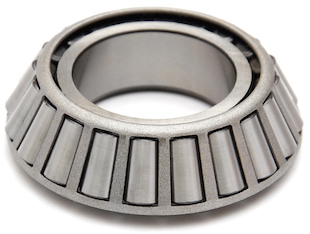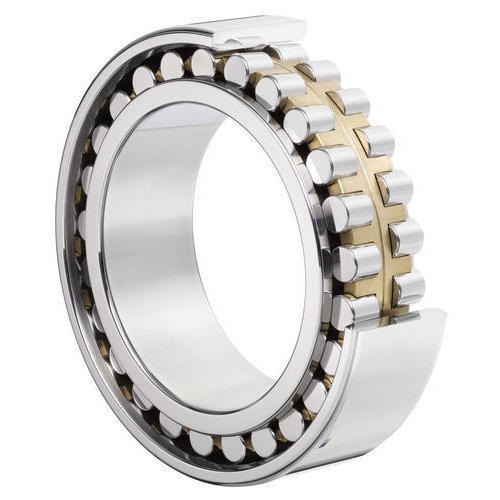How do Tapered Roller Bearings Contribute to the Efficiency of Automotive Wheel Hubs?
Tapered roller bearings play a crucial role in enhancing the efficiency and performance of automotive wheel hubs. They are specifically designed to handle both radial and axial loads, making them ideal for supporting the weight of the vehicle, providing smooth rotation, and ensuring safe and reliable operation. Here’s how tapered roller bearings contribute to the efficiency of automotive wheel hubs:
- Load Distribution:
Automotive wheel hubs experience a combination of radial and axial loads due to the vehicle’s weight, acceleration, braking, and cornering forces. Tapered roller bearings efficiently distribute these loads, preventing localized stress concentrations and ensuring uniform load sharing across the bearing components.
- Smooth Rotation:
Tapered roller bearings enable smooth and low-friction rotation of the wheel hub around the axle. This minimizes rolling resistance, leading to improved fuel efficiency and reduced energy consumption.
- Axial Load Handling:
During cornering and steering maneuvers, automotive wheel hubs encounter axial loads. Tapered roller bearings are designed to handle these axial loads without compromising their ability to carry radial loads, ensuring stable and controlled vehicle handling.
- Reduced Friction and Wear:
The tapered geometry and precision design of the rollers and raceways in these bearings minimize friction between components. This results in reduced wear, lower heat generation, and extended bearing life, contributing to long-term efficiency.
- Reliable Performance:
Tapered roller bearings are known for their durability and resistance to wear and fatigue. They maintain their performance even under harsh operating conditions, ensuring consistent and reliable wheel hub operation.
- Enhanced Safety:
The efficiency of tapered roller bearings directly impacts the vehicle’s stability and control. Properly functioning bearings prevent issues like wheel wobbling, uneven tire wear, and compromised steering, contributing to safe driving conditions.
- Easy Replacement:
When maintenance or replacement is required, tapered roller bearings can be easily installed and removed. This simplifies the servicing process and reduces vehicle downtime.
- Reduced Maintenance Costs:
The long service life and reliability of tapered roller bearings minimize the need for frequent maintenance and replacement, reducing overall maintenance costs for the vehicle owner.
- Optimized Performance:
Efficient wheel hubs with properly functioning tapered roller bearings lead to improved vehicle performance, including better acceleration, braking, handling, and overall drivability.
Overall, tapered roller bearings contribute to the efficiency and effectiveness of automotive wheel hubs, enhancing vehicle performance, safety, and longevity.
How do cylindrical roller bearings perform in high-speed or high-temperature environments?
Cylindrical roller bearings are designed to perform reliably in high-speed or high-temperature environments, although their performance may be influenced by various factors. Let’s explore how cylindrical roller bearings perform under these conditions:
- High-Speed Environments:
In high-speed environments, cylindrical roller bearings are subjected to increased centrifugal forces and higher operating temperatures. To accommodate these conditions, several design features are employed:
- Cage Design:
Cylindrical roller bearings intended for high-speed applications often feature optimized cage designs. The cage, or retainer, holds the cylindrical rollers in position and prevents excessive friction and heat generation. Cages made of lightweight materials such as phenolic resin or engineered plastics help reduce inertia and minimize cage wear at high speeds.
- Roller and Raceway Geometry:
The roller and raceway profiles are designed to minimize sliding friction and ensure proper roller guidance. Special attention is given to the surface finish and precision of these components to reduce friction and minimize heat generation. Additionally, high-speed cylindrical roller bearings may have specific modifications, such as optimized roller end profiles and surface coatings, to further enhance their performance in high-speed applications.
- Lubrication:
Proper lubrication is crucial in high-speed environments to reduce friction, dissipate heat, and prevent premature wear. High-speed cylindrical roller bearings often require lubricants with specific properties, such as low viscosity and excellent thermal stability, to ensure effective lubrication under high-speed conditions. Lubrication methods, such as oil-air lubrication or oil mist lubrication, may be employed to provide sufficient lubricant supply to the bearing at high speeds.
- High-Temperature Environments:
When operating in high-temperature environments, cylindrical roller bearings face challenges related to elevated temperatures and potential thermal expansion. To address these challenges, the following considerations are taken into account:
- Bearing Materials:
High-temperature cylindrical roller bearings are often made from heat-resistant materials that can withstand elevated temperatures without compromising their mechanical properties. Common materials include high-temperature steels, heat-resistant alloys, or ceramics. These materials offer improved dimensional stability and resistance to thermal expansion, ensuring the bearing’s performance and longevity.
- Lubrication:
Proper lubrication becomes even more critical in high-temperature environments. Lubricants with high-temperature stability, such as synthetic oils or greases specifically formulated for high temperatures, are used to maintain adequate lubrication properties and prevent premature lubricant degradation. Lubrication intervals may need to be adjusted to ensure sufficient lubricant replenishment under high-temperature conditions.
- Clearance and Preload:
In high-temperature environments, the bearing’s internal clearance or preload may be adjusted to compensate for thermal expansion. Proper clearance or preload selection helps maintain the desired operating conditions and prevents excessive bearing play or preload loss due to thermal effects.
It’s important to note that the specific performance of cylindrical roller bearings in high-speed or high-temperature environments can vary depending on factors such as the bearing size, design, operating conditions, and the presence of additional cooling or heat dissipation measures. Consulting bearing manufacturers’ recommendations and considering the application requirements are crucial for selecting the appropriate cylindrical roller bearings for high-speed or high-temperature applications.
Can you describe the load-carrying capacity and load ratings of cylindrical roller bearings?
Cylindrical roller bearings have specific load-carrying capacity and load rating characteristics that determine their performance under different operating conditions. Let’s delve into the details of load-carrying capacity and load ratings for cylindrical roller bearings:
- Radial Load-Carrying Capacity:
Cylindrical roller bearings are primarily designed to handle radial loads, which are forces applied perpendicular to the shaft. They have a high radial load-carrying capacity due to the arrangement of cylindrical rollers and their large contact area with the raceways. The load is distributed evenly along the length of the rollers, allowing cylindrical roller bearings to support heavy machinery components and withstand substantial radial forces.
- Axial Load-Carrying Capacity:
While cylindrical roller bearings are primarily intended for radial loads, they can also accommodate moderate axial loads, which are forces applied parallel to the shaft. The axial load-carrying capacity of cylindrical roller bearings is limited compared to their radial load capacity. Therefore, for applications with predominantly axial loads, other types of bearings, such as thrust bearings, should be considered.
- Dynamic Load Rating:
The dynamic load rating is a key parameter that indicates the maximum load a bearing can withstand under specific operating conditions without suffering premature fatigue failure. It is defined as the constant radial load (or radial equivalent load) that a group of identical bearings can theoretically endure for a rating life of one million revolutions. The dynamic load rating is specified by the bearing manufacturer and is expressed in Newtons (N) or pounds-force (lbf).
- Static Load Rating:
The static load rating of a cylindrical roller bearing represents the maximum radial load it can sustain without exhibiting excessive permanent deformation. Unlike the dynamic load rating, which considers the fatigue life of the bearing, the static load rating focuses on the bearing’s ability to withstand a static load for an extended period without experiencing plastic deformation or other permanent damage. Similar to the dynamic load rating, the static load rating is provided by the manufacturer and is expressed in Newtons (N) or pounds-force (lbf).
- Load Rating Calculation:
The load ratings of cylindrical roller bearings are determined through standardized calculation methods defined by international standards organizations such as ISO (International Organization for Standardization) and ABMA (American Bearing Manufacturers Association). These calculations take into account factors such as bearing dimensions, geometry, material properties, and operating conditions to establish the dynamic and static load ratings for a specific bearing model.
- Application Considerations:
When selecting cylindrical roller bearings for a particular application, it is crucial to consider the expected load requirements, load orientation, and operating conditions. The calculated load ratings should be compared to the actual loads that the bearing will experience in the application to ensure that the chosen bearing can safely and reliably support the anticipated loads throughout its service life.
In conclusion, cylindrical roller bearings have a high radial load-carrying capacity and can accommodate moderate axial loads. The dynamic and static load ratings provided by the manufacturer serve as important parameters for assessing the bearing’s load-carrying capability and determining its suitability for specific applications.
editor by CX 2024-02-23




